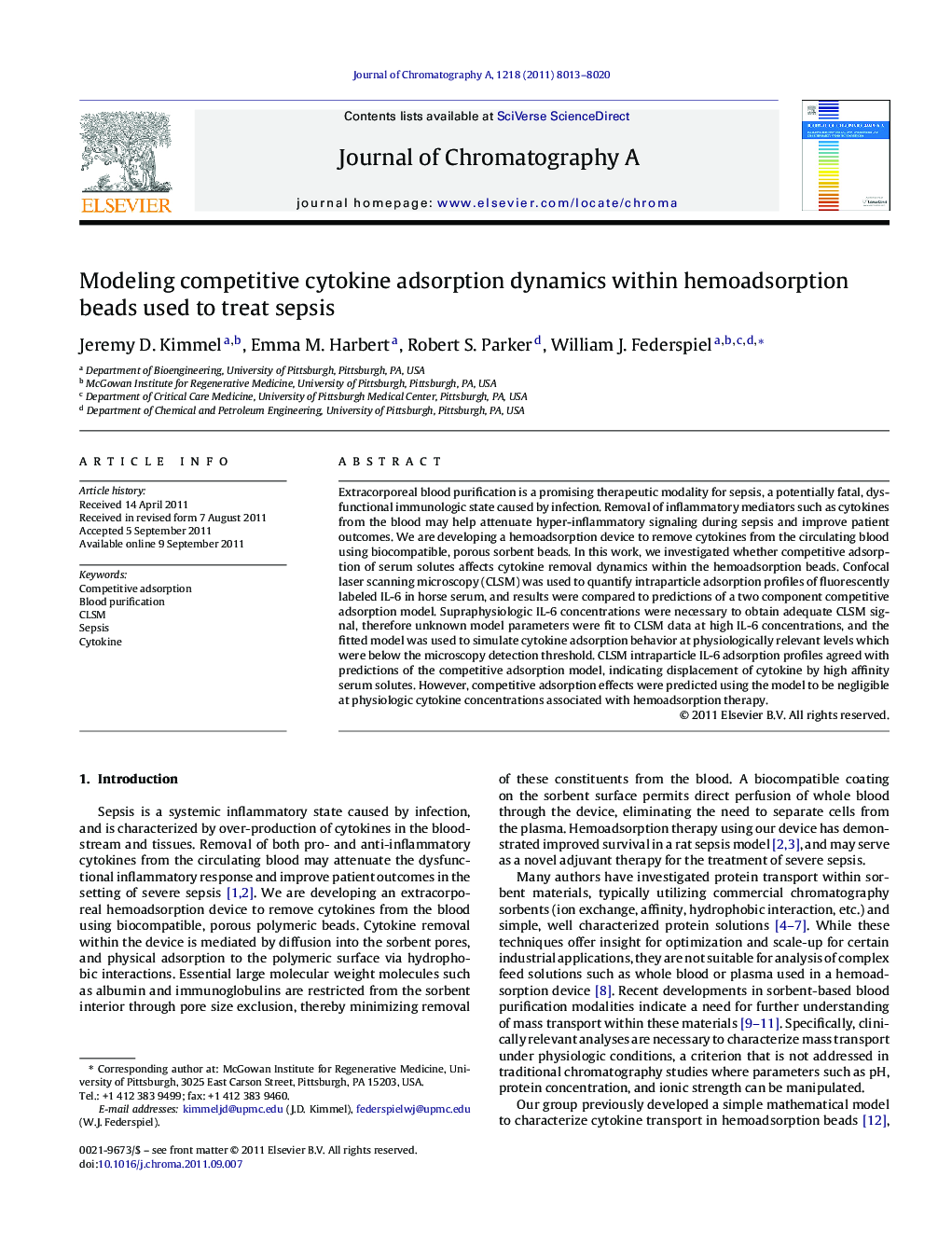| Article ID | Journal | Published Year | Pages | File Type |
|---|---|---|---|---|
| 1203706 | Journal of Chromatography A | 2011 | 8 Pages |
Extracorporeal blood purification is a promising therapeutic modality for sepsis, a potentially fatal, dysfunctional immunologic state caused by infection. Removal of inflammatory mediators such as cytokines from the blood may help attenuate hyper-inflammatory signaling during sepsis and improve patient outcomes. We are developing a hemoadsorption device to remove cytokines from the circulating blood using biocompatible, porous sorbent beads. In this work, we investigated whether competitive adsorption of serum solutes affects cytokine removal dynamics within the hemoadsorption beads. Confocal laser scanning microscopy (CLSM) was used to quantify intraparticle adsorption profiles of fluorescently labeled IL-6 in horse serum, and results were compared to predictions of a two component competitive adsorption model. Supraphysiologic IL-6 concentrations were necessary to obtain adequate CLSM signal, therefore unknown model parameters were fit to CLSM data at high IL-6 concentrations, and the fitted model was used to simulate cytokine adsorption behavior at physiologically relevant levels which were below the microscopy detection threshold. CLSM intraparticle IL-6 adsorption profiles agreed with predictions of the competitive adsorption model, indicating displacement of cytokine by high affinity serum solutes. However, competitive adsorption effects were predicted using the model to be negligible at physiologic cytokine concentrations associated with hemoadsorption therapy.
► Porous hemoadsorption beads remove cytokines from serum. ► CLSM was used to quantify IL-6 transport within the beads. ► We modeled competitive adsorption dynamics between cytokine and serum solutes. ► Model was used to simulate cytokine transport under clinically relevant conditions. ► Competitive adsorption effects are negligible at physiologic cytokine concentrations.
